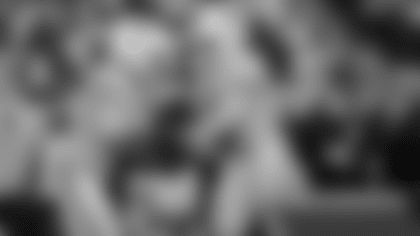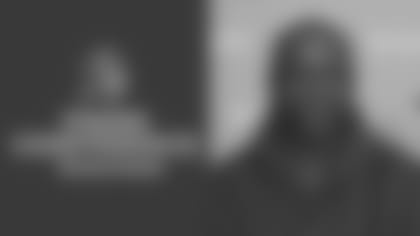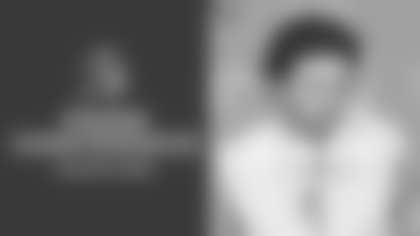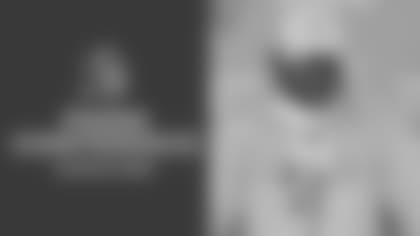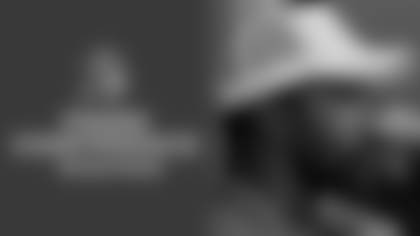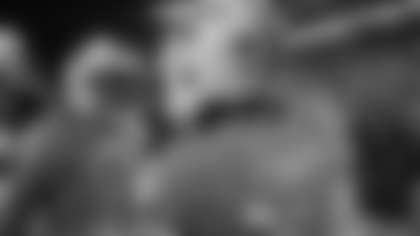In 1987, the Tampa Bay Buccaneers selected two players in the seventh round of the NFL Draft, defensive tackle Curt Jarvis and defensive end Harry Swayne.
Jarvis would play four seasons for the Buccaneers and start 36 of the 38 games he played, anchoring the team's 3-4 front and providing a decent pass rush before a back injury ended his career. Swayne would play one season on defense before making a very successful conversion to offensive tackle; the majority of his 15-year career was played elsewhere but he gave the Bucs four solid seasons.
That's a nice haul for the seventh round, even when the draft used to go 12 or more rounds. It's also the exception for the Buccaneers.
Over three and a half decades, the seventh round has produced some minor contributors for Tampa Bay – Parnell Dickinson, Jim Leonard, Kerry Goode and a few others – but little in the way of cornerstone players. In 1994, the draft was shortened to its current length of seven rounds, making players picked in that stanza officially your "fringe prospects," and the Bucs started out by nabbing center Jim Pyne that year. Pyne was a success story, starting 36 games over four seasons and also earning the honor of being the first player selected in the Cleveland Browns' 1999 expansion draft.
Over the next decade and a half, however, the seventh round did little to help the Bucs' long-term fortunes, even though in many of the years they were making two, three or even four selections in that frame. Most of the names are forgettable – Jeffrey Rodgers, Reggie Rusk, Anthony DeGrate, Robert Hunt, Zack Quaccia. A few made the team briefly, such as Tim Wansley and Joe Tafoya and Paris Warren. Mark Jones, picked in the seventh round in 2004, would end up as a good return man in New York and then eventually return to the Buccaneers for several solid seasons. Quarterback Joe Hamilton got a Super Bowl ring with the Bucs in 2002, though he was on injured reserve at the time and he never threw an NFL regular-season pass.
When Mark Dominik and Raheem Morris ascended to the posts of general manager and head coach, respectively, for the Buccaneers in January of 2009 they initiated their own plan to restock the team for long-term success. That plan relied heavily on draft-day success, and indeed the team's first-round picks in 2009 and 2010 – quarterback Josh Freeman and defensive tackle Gerald McCoy – are likely to be the team's most important players for years.
But Dominik and Morris knew that plumbing the draft for long-term roster assets couldn't end in Round One, or even at the end of Day One (or Day Two, for that matter, in the new three-day format). Their Bucs were going to make a concerted effort to draft players in the fifth, sixth and seventh rounds that would actually help the team. At one point in the spring, as the team built its draft board one painstaking evaluation at a time, Dominik held a series of important meetings with his coaching and personnel staffs. In the first one, he surprised the group by telling them they would be looking at none of the players rated with high-round grades. First, they were going to get to know the young men who would be available in the draft's latter stages, so that they could make more informed and successful choices at the end.
That approach appears to be paying off in a big way.
In 2009, the Buccaneers made two seventh-round picks: Oregon State wide receiver Sammie Stroughter and Western Michigan cornerback E.J. Biggers. Stroughter immediately made everyone forget his humble draft roots, standing out from his first day on the practice field and eventually finishing third on the team with 31 catches for 334 yards and one touchdown in 2009. He became the team's best option on third downs, working out of the slot, and also proved to be a dynamic return man. In addition to averaging 29.5 yards per kickoff return and 9.9 yards per punt return, he ripped off a 97-yard kickoff runback for a touchdown against Carolina in October.
Had the Bucs gotten only that contribution out of the Stroughter-Biggers pair of 2009, it would have still been a huge seventh-round win. It's possible, however, that Biggers is going to figure as extensively into the Bucs' 2010 plans as will Stroughter, who is vying for a starting job opposite rookie Mike Williams this summer.
Biggers sustained a shoulder injury near the end of the 2009 preseason and spent all of his rookie campaign on injured reserve. That left him as something of an unknown commodity coming into 2010, but no more. As the Bucs head into the third game of their 2010 preseason schedule, Biggers is on the verge of nailing down the nickel back job on defense. While that is not technically a starting role, the nickel back is often on the field for 40 or 50 percent of a team's defensive snaps.
Biggers started camp with intense competition for that job from 2010 third-round pick Myron Lewis, former nickel back job-holder Elbert Mack and holdovers Derrick Roberson and Brandon Anderson. But after two games in which he has made four solo tackles, broken up a pass, recorded a tackle in the backfield for a loss and recovered a fumble, Biggers has moved ahead of the pack.
"Right now, you've got to say Biggers is the lead-dog guy right now," said Morris on Tuesday, a day after the team's updated depth chart revealed several starting-lineup changes. "He's been out there competing hard. He's put together two really good games. He's been playing well. Elbert's been doing just as good. He's come out and played well as well but Biggers has made the more standout plays right now. Lewis got his first game, got his feet wet a little bit, touched some people in that second half. Hopefully he comes on and creates some more competition, but if you were to play a game today you'd have to say Biggers has the lead."
Stroughter, meanwhile, looks like a good bet to expand his role in his second season. With five catches for 60 yards and a touchdown, he is the team's leading receiver through two preseason games. He is very much in the thick of the race for that starting spot opposite Williams, but barring that he should continue to work his magic out of the slot. Even with the team's newfound competition at receiver, it's hard to imagine the Bucs devising an offensive game plan that doesn't include Stroughter's clutch play-making.
"The only real positional battle that's not written in stone yet would be at that Z receiver spot," said Morris. "Right now, our X is pretty much written in stone with Mike Williams and we've got a nice battle still looming over at the Z position with Maurice Stovall, Arrelious Benn, Sammie Stroughter, Michael Clayton."
That would appear to make 2009 a nice little Jarvis-Swayne type blip if the Buccaneers hadn't also potentially nailed the seventh round this past spring. In this case, it is definitely too early to claim success with any of the team's draftees; safety Cody Grimm, linebacker Dekoda Watson and defensive end Erik Lorig have played roughly one NFL game apiece, and all against the other teams' reserves. None has yet to guarantee himself a spot on the active roster yet. But, tellingly, Morris is contemplating those three prospects not only in terms of whether he can find a spot for them on this year's roster but on how much immediate help they might be able to provide on game days.
"I think these guys have all done a great job," said Morris. "You can start with Cody Grimm. To see him fly around and make the plays he made the other night was impressive. To see Dekoda have the rush presence that you saw in the first game and he's also played well on special teams – it's been really impressive. To see Lorig go out there and give us ultimate hustle – he made a couple nice tackles this week and provided some rush in the later half of that game – was impressive. I think all those guys are fighting for not only roster spots but 45-man spots."
Morris likes to refer to his team as a bus that is "driven from the bottom up." This is a reference to the last five or 10 players who make the 53-man roster; if those players are finding ways to contribute significantly, your entire team is likely to be more successful. For the players who can achieve such a feat – think Earnest Graham, Donald Penn or Clifton Smith – their days at the bottom of the roster won't be many.
Stroughter drove that bus as a rookie and now he's close to cracking the starting lineup. His fellow 2009 seventh-rounder is ready to make a big impact as well. Grimm, Watson and Lorig could figure into the team's plans this fall, too, particularly on special teams. Suddenly the seventh round is looking pretty good to the Tampa Bay Buccaneers.








